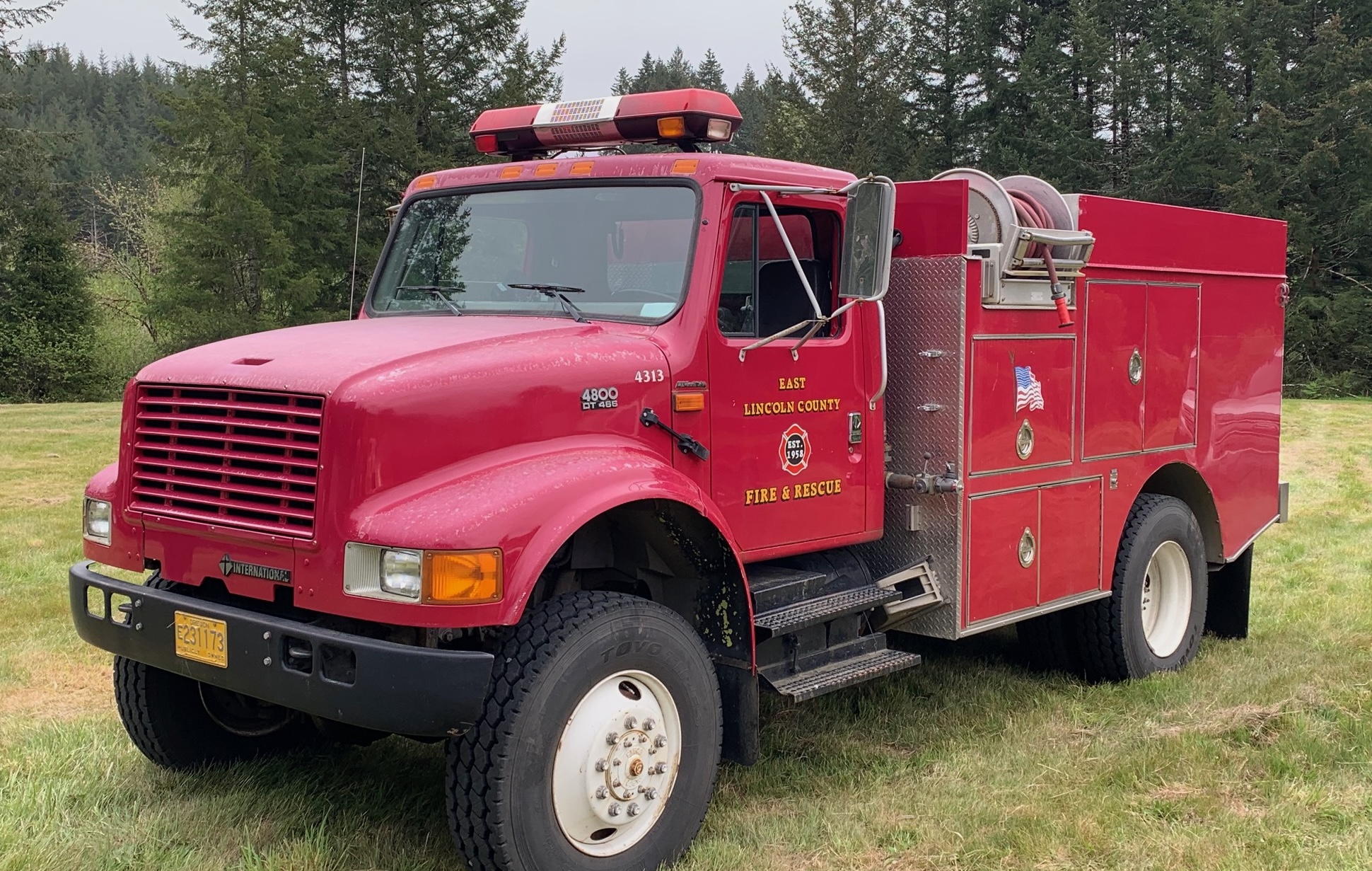
By GARRET JAROS/Lincoln Chronicle
EDDYVILLE – When voters in a 55-square-mile patch of rural east Lincoln County that straddles U.S. Highway 20 open their ballots they are going to see a first — a request by their fire district for a tax increase.
The East Lincoln County Fire District is asking 1,888 registered voters to consider adding 39 cents per $1,000 assessed property value to their yearly tax bill to help purchase equipment needed after a long-standing agreement with the Toledo Fire Department came to an abrupt end in September.
 The district encompasses areas to the west, north and south of Toledo and to the east where it covers the communities of Elk City and Eddyville.
The district encompasses areas to the west, north and south of Toledo and to the east where it covers the communities of Elk City and Eddyville.
The district has a permanent tax base of $1.05 per $1,000, which for property assessed at $250,000 is $262.50 per year. That rate has not changed since the district was established in 1958, said East Lincoln’s volunteer fire chief Will Ewing who also serves as Seal Rock Fire District’s paid chief.
A 39 cent increase would add $97.50 a year to that same property owner’s bill for a total of $360 a year.
Measure 21-234 is officially listed as a five-year levy beginning in 2025-26 to raise money for firefighting equipment and disaster preparedness. Ballots were mailed to registered voters last week and are due back to the Lincoln County clerk’s office by 8 p.m. May 20.
“This is a startup process and we have many needs to protect (the district)…” the district said in information provided for the Lincoln County voters’ pamphlet. “As this is a new process for us, we need to acquire all the equipment that was previously provided by the city. This levy would protect the firefighters with the proper safety protective equipment, but also provide them with the proper tools to mitigate emergencies.”

Ewing said the district’s volunteers are responding to 450 to 500 calls a year.
“And right now we’re not doing that as Toledo anymore, we are doing it as East Lincoln,” he said. “We are starting from scratch but we’re still meeting the same mission. So, it’s really important that we start off on the right foot. We can’t bring buckets of water to a fire or Band-Aids to a medical call.”
The all-volunteer district owns some equipment, including a water tender, heavy brush truck, command vehicle and an engine, Ewing said. But it needs life-saving extrication equipment, breathing apparatus for firefighters, more turnouts, helmets and gloves, and thermal imaging cameras among other things.
The levy will also allow for the development of small caches of disaster supplies for emergencies.

District history
In 1958 the Toledo Rural Fire Protection District was formed and funded by a tax base voted on by residents in the district, which at that time covered about 40 square miles. The arrangement stayed fairly static until it was determined insurance rates were higher for areas outside the district, which led to a series of annexations. In 2017 its name changed to East Lincoln County Fire Rescue.
The district had been operating under an agreement with the city of Toledo and its fire department that had the district providing money while Toledo’s fire department provided equipment and personnel.
But that came to an end last fall after a shakeup within the city that saw the Toledo fire chief placed on paid administrative leave and the abrupt discharge of multiple volunteers. The turmoil snowballed into January when Toledo’s interim city manager, interim fire chief and the fire department’s training officer suddenly resigned. Toledo’s city manager had also been placed on paid administrative leave.
The turmoil left many of Toledo’s former volunteer firefighters volunteering with East Lincoln and resulted in the district intensifying building its own response capabilities.
The district now has 19 volunteers, according to the information provided in the voters’ pamphlet, many of which are former members of Toledo Fire.
Funds from the levy would address the immediate equipment needs of responders as well as reoccurring costs. The district is also responsible for disaster preparedness and the levy would help expand that program, according to the statement.
“It costs an average of $5,000 to outfit a firefighter with structural protective equipment either paid or volunteer,” according to the statement. “Added to the other response categories, the cost of personal equipment is well in excess of that. When combined with the need for necessary tools to assist those in need, it is very expensive.
“The money that used to go to the city will now be spent on maintaining the business of the district,” the statement continued. “This included dispatch, insurance, training compliance, fuel, electricity, and so forth.”
While the district is asking voters to help with operating funds, it also received a big boost from the 2021 Legislature which allocated $4 million to the district to build a fire station/emergency center near U.S. Highway 20 in Eddyville. The funding is restricted solely for the building of the station, which the district held a groundbreaking ceremony for on May 2.
Ewing said East Lincoln has been providing coverage to the district while also helping Toledo during it recent upheaval thanks in part to his so-called “firefighters without borders,” which has East Lincoln and Seal Rock sharing resources.
“We haven’t dropped a single call and that’s why we need this, to keep going like we want to go,” Ewing said. “To reward our volunteers that are giving their time. I mean zero cost for the manpower pool, that’s pretty good. So, effectively treating our volunteers with respect and getting them the tools they need to be effective is really what this boils down to.”
- Garret Jaros covers the communities of Yachats, Waldport, south Lincoln County and natural resources issues for the Lincoln Chronicle, formerly YachatsNews, and can be reached at GJaros@YachatsNews.com



Comment Policy